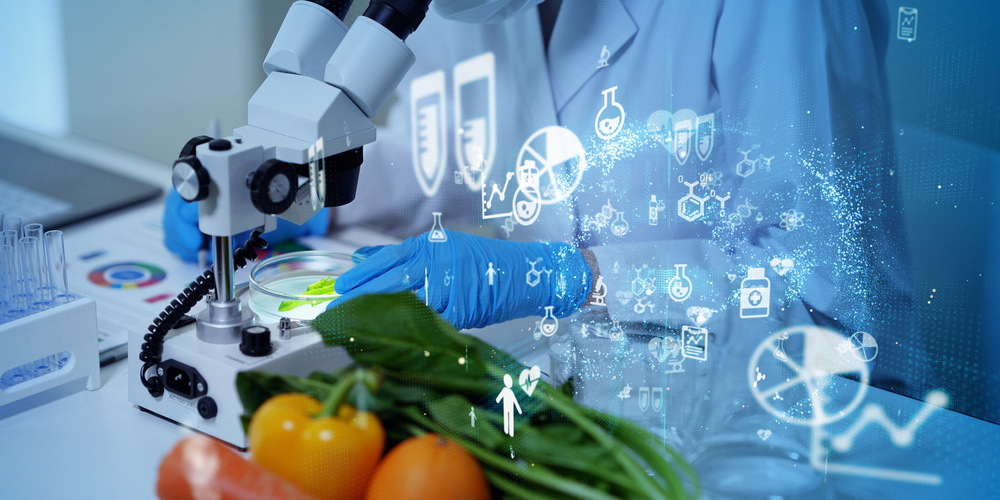The 2024 State of Food Safety and Digitalization in the Food and Beverage Industry
The food and beverage industry is undergoing a significant digital transformation, driven by the dual imperatives of enhancing food safety and operational efficiency. As foodborne illnesses continue to pose serious public health challenges, the integration of advanced technologies offers promising solutions to mitigate these risks. This blog post explores the current state of food safety and the impactful role digitalization plays in safeguarding our food supply, ensuring compliance, and improving overall industry efficiency.
The State of Food Safety
Food safety remains a critical public health concern globally. In the United States, the Centers for Disease Control and Prevention (CDC) has provided extensive data on the burden and attribution of foodborne illnesses. According to the CDC, foodborne diseases are responsible for approximately 48 million illnesses, 128,000 hospitalizations, and 3,000 deaths annually in the U.S.1
These illnesses are caused by a variety of pathogens, including bacteria, viruses, and parasites. Notably, 31 known pathogens account for about 9 million of these illnesses, while unspecified agents are responsible for an additional 38 million cases.1 These figures highlight the importance of ongoing vigilance and improvement in food safety measures.
Trends in Foodborne Illnesses1,2,3:
- Common Pathogens: The five most common pathogens are Norovirus, Salmonella, Clostridium, Campylobacter, and Staphylococcus. Norovirus alone accounts for 58% of foodborne illnesses, while Salmonella is responsible for the majority of hospitalizations and deaths. E. Coli and Toxoplasma are also among those most commonly associated with hospitalizations, whereas Toxoplasma and Listeria join Salmonella as being responsible for the most deaths.
- Sources of Infection: Contaminated food sources vary widely, but a significant proportion of illnesses are attributed to produce, dairy, and meat products. Although leafy vegetables account for the most illnesses, meat and poultry account for almost 1/3 of deaths, primarily from Listeria and Salmonella.
- Outbreak Trends: Data from FoodNet indicates a fluctuating trend in the incidence of foodborne illnesses, due to a decline during the heart of COVID-19 and a subsequence resurgence. In recent years, there has been an increase in outbreaks linked to fresh produce and ready-to-eat foods. The trends in food safety show that while there have been improvements, challenges remain.
The Role of Digitalization in the Food and Beverage Industry
The digital transformation of the food and beverage industry offers promising solutions to enhance food safety. Digitalization encompasses everything from the transition away from paper forms and excel spreadsheets to software solutions, to the integration of advanced technologies associated with IoT (Internet of Things), blockchain, AI (Artificial Intelligence), ML (Machine Learning), and big data analytics into the food supply chain. These technological advancements can help address food safety issues more effectively by improving traceability, enhancing quality control, and streamlining recall processes.
Enhancing Traceability
One of the significant benefits of digitalization is the enhanced traceability of food products. Blockchain technology, for example, allows for the secure and transparent tracking of food items from farm to table. Traceability is crucial during foodborne illness outbreaks, as it enables rapid identification and removal of contaminated products from the market, thereby reducing the risk of widespread illness.
Improving Quality Control
Digital tools such as IoT sensors can monitor environmental conditions during food production, transportation, and storage. These sensors provide real-time data on temperature, humidity, and other critical factors that affect food safety. By ensuring optimal conditions are maintained throughout the supply chain, these technologies help prevent spoilage and contamination, thus maintaining food quality and safety.
Streamlining Recalls
In the event of a food safety issue, digital systems can expedite the recall process. AI and big data analytics can quickly analyze vast amounts of data to identify the source and distribution of contaminated products. This rapid response is essential in minimizing the impact of foodborne illness outbreaks and protecting consumers.
Key Forces and Technologies Driving Digitalization:
-
Internet of Things (IoT) and Smart Sensors:
- Usage: Nearly 60% of U.S. food and beverage manufacturers utilize IoT for tracking and tracing ingredients, though less than half are using the advanced analytics the IoT makes possible.4
- Benefits: These sensors provide real-time data on variables such as temperature and humidity, essential for maintaining product safety and quality.
-
Cloud Computing and ERP Systems:
- Adoption: According to Accenture's 2019 ERP Trends, 51% of CIOs consider cloud-based ERP systems crucial for operational control and compliance.
- Impact: Small manufacturing plants adopting ERP systems have reported an 11% reduction in operating costs, improved data visibility, and better office process efficiencies.
-
Big Data and Analytics:
- Current State: 87% of organizations have low analytics maturity, indicating a significant opportunity for improvement.5
- Applications: Advanced analytics can identify inefficiencies and potential safety issues before they become critical, allowing for proactive measures.
-
Automation:
- Functions: For example, automation in predictive maintenance helps prevent costly repairs and ensures consistent quality control throughout the supply chain.
- Adoption Trends: Automation is increasingly integral to modern food and beverage operations, enhancing efficiency and compliance.
-
Regulatory Compliance:
- Standards: The FDA oversees approximately 75% of the U.S. food supply, enforcing stringent safety regulations.6
- Technological Support: Digital solutions, including HACCP software, help businesses maintain compliance with evolving food safety standards.
Conclusion
The intersection of food safety and digitalization in the food and beverage industry presents an exciting frontier. As the industry continues to embrace software solutions, IoT, cloud computing, big data analytics, and automation, the potential to significantly reduce foodborne illnesses and recalls becomes more attainable. By leveraging these technologies, companies can ensure higher standards of food safety, operational efficiency, and regulatory compliance, ultimately benefiting consumers and the public health landscape.
Novolyze's suite of advanced digitalization solutions, including Environmental Monitoring, Sanitation Complete, Smart Process Control, and Smart Validation, exemplifies this transformative impact of technology on food safety and operational efficiency.
Environmental Monitoring provides real-time data on critical environmental conditions, ensuring immediate detection and response to potential contamination risks, as well as predictive capabilities. Sanitation Complete enhances cleaning protocols with precise, data-driven insights, optimizing sanitation processes and ensuring compliance. Smart Process Control leverages IoT and analytics to maintain optimal production parameters, preventing quality deviations and ensuring consistent product safety at maximum OEE. Finally, Smart Validation uses cutting-edge validation techniques to verify processes and enable ongoing compliance, minimizing risks and enhancing overall food safety.
Together, these solutions enable the food and beverage industry to significantly reduce foodborne illnesses, streamline recalls, and maintain the highest standards of quality and safety.
See for yourself how Novolyze's advanced solutions can enable the benefits listed above:




